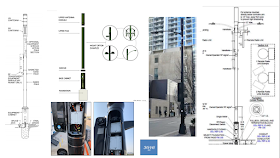Back in April, a presentation from Airspan showed that they have shipped nearly 500k small cells. Sprint has nearly 300k MagicBoxes while Jio has around 120k small cells.
As you can see above, Airspan has a range of outdoor small cells and as shown below, a wide range of indoor small cells.
Airspan recently announced that it has partnered with Rakuten, the newest MNO in Japan, to bring comprehensive 4G and 5G solutions to the world’s first fully virtualized cloud-native mobile network. The announcement said:
Airspan’s Air5G OpenRange28 mmWave platform in 28GHz will deliver ultra-high capacity to Rakuten Mobile with record time-to-market, enabling unprecedented monetization opportunities. Airspan’s open RAN platforms will provide Rakuten Mobile the flexibility to disrupt the economics of traditional network operators and lay the foundation for transformational 5G architectures. With over half a million systems deployed globally, Airspan brings its proven disruptive economics to the fully virtualized Rakuten Mobile network.
Airspan’s mmWave virtualized Air5G OpenRange28 platform utilizes Qualcomm’s FSM100xx 5G chipset and supports open RAN architectures, seamlessly connecting to Rakuten Mobile’s virtualized BBU to deliver the world’s most advanced open interface virtualized RAN solution. The OpenRange28 mmWave platform supports multiple functional splits for the widest possible set of deployment options, ensuring Rakuten Mobile customers benefit from the highest level of efficiency and the best user experience in Japan.
Airspan's 5G products can be viewed here.
With so many innovators working with Rakuten, it would be interesting to see their 4G & 5G network rollout. Looking forward to some big announcements at MWC next year.
Related Posts:
- Turkcell's Small Cell Strategy
- Sprint's Trebl: Magic Box + Alexa + HiFi Speakers
- Dense Air: The Neutral Host Small Cell Wholesale Network Operator




